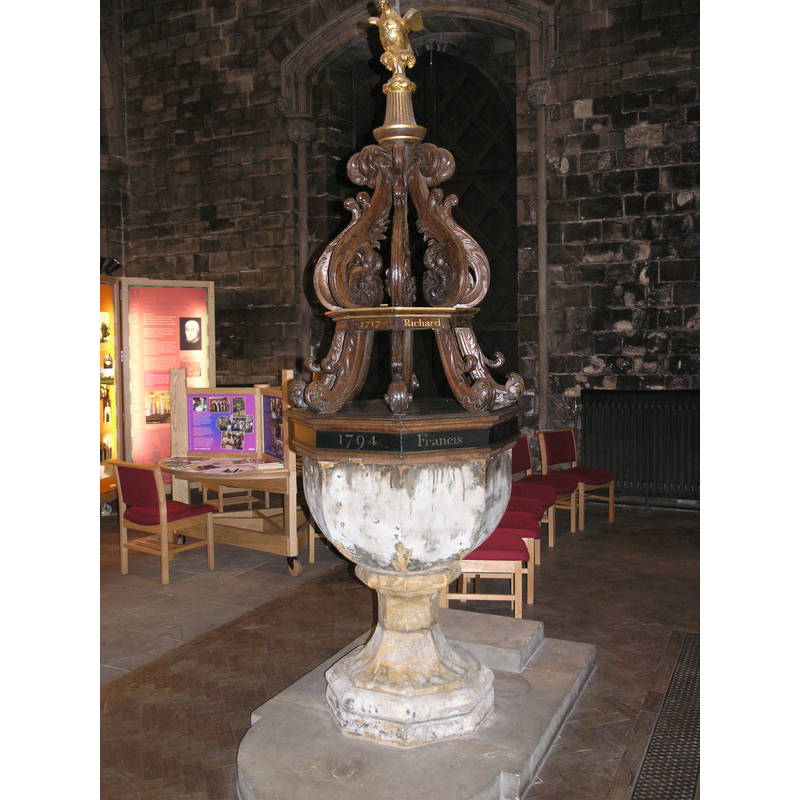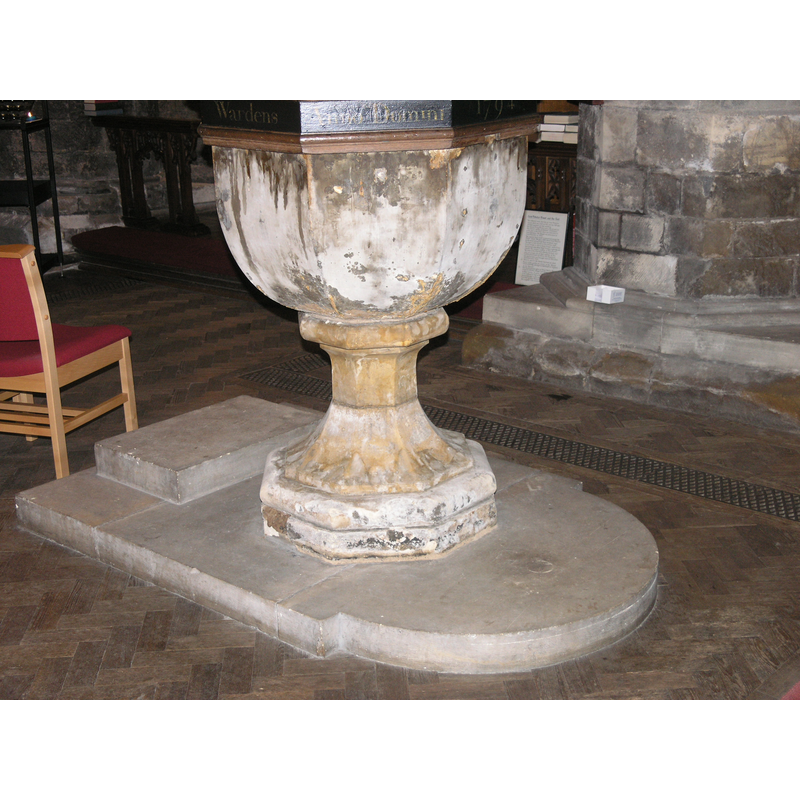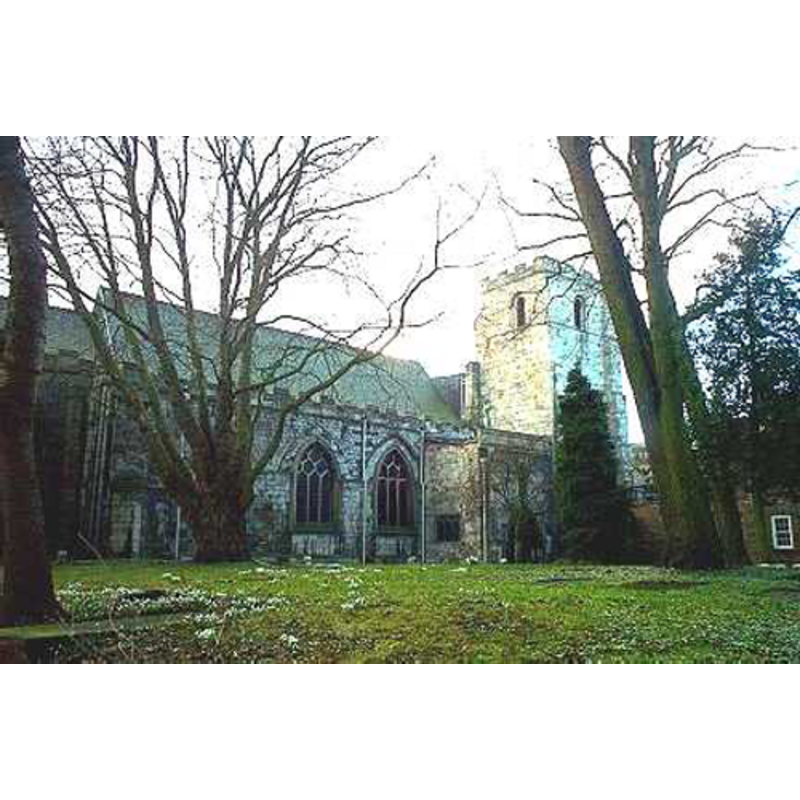York No. 9 / Eboracum / Eburacum / Eburākon / Eoforwic / Everwic / Jórvík

Image copyright © Colin Hinson, 2011
Standing permission
Results: 5 records
design element - motifs - moulding
design element - motifs - moulding
view of church exterior - northeast view
view of cover
Scene Description: notice the two inscriptions: "1717 / Richard / [...]", and "1794 / Francis / Hunt [...]" [cf. FontNotes]
Copyright Statement: Image copyright © Colin Hinson, 2011
Image Source: digital photograph taken 26 June 2010 by Colin Hinson [www.yorkshirecdbooks.com]
Copyright Instructions: Standing permission
INFORMATION
FontID: 14025YOR
Object Type: Baptismal Font1
Church/Chapel: Priory Church of the Holy Trinity [formerly Christ Church, King's Court] Micklegate [Holy Trinity King's Court was demolished in 1937]
Church Patron Saints: The Holy Trinity
Country Name: England
Location: North Yorkshire, Yorkshire and the Humber
Directions to Site: Located on King's Court, near the medieval cemetery that fronts on Micklegate, behing Micklegate's Post Office
Ecclesiastic Region: Diocese of York
Font Location in Church: Inside the church, at the E end of the S aisle
Century and Period: 15th century [lower base only] [composite font], Late Medieval [composite]
Credit and Acknowledgements: We are grateful to Colin Hinson, of www.yorkshirecdbooks.com, for his photographs of this font
Font Notes:
Click to view
There are twelve entries for York in the Domesday survey [https://opendomesday.org/place/SE6052/york/] [accessed 8 August 2019] eight of which mentions a church in it [cf. infra]. The entry for York churches in the Victoria County History (York, 1961) notes: "Eight churches are mentioned in Domesday: [...] three (St. Crux, St. Cuthbert, and Holy Trinity, Micklegate) may be certainly identified, and four (All Saints, Pavement, St. Andrew, St. Andrewgate, St. Martin, Coney Street, and St. Mary, Castlegate) with considerable probability; one is not named [...] Only of one church, and that an early one, is the foundation date certainly known: St. Olave's. [...] The church of HOLY TRINITY, King's Court, which was frequently known as Christ Church, is first mentioned in 1268 when its rector was ordained sub-deacon. [...] Nothing is known of its foundation." The same VCH source (ibid.) notes: "The church of HOLY TRINITY, Micklegate, also called Christ Church, [...] 179) belonged in 1086 to Richard son of Erfast [...] It s to be supposed that Christ Church had served the religious needs of the neighbourhood from its foundation." At this point the history of this church gets very confusing as it also includes and 'appendix', by the name of St Nicholas', which apparently piggybacks on the Holy Trinity priory church, and eventually: "the city united the church of St. Nicholas with that of Holy Trinity and the parish is thereafter known as Holy Trinity. [...] Presumably the remains of St. Nicholas's had by this time become ruinous and the parishioners seized the opportunity to claim the nave of the priory church, the choir and transepts having already fallen into the hands of depredators. [...] the church comprises the nave of the priory church and a tower rebuilt from older materials by the parishioners in 1453. The nave arches and the triforium arcade are late-12thcentury work and other work of this date is predominant in the church. A chancel was constructed in 1886. The west end was reconstructed in 1905". The RCHM (York, 1962- ) notes that the original church here was formerly a priory church and that Domesday records it as 'Christ Church', but was destroyed by a fire in June 1137; a new church is documented in place ca. 1180, with many later changes and re-modellings. The RCHM (ibid.) reports two fonts in this church: a font brought from St. Saviour's in 1953 consisting of a "large octagonal bowl, perhaps 18th-century, set on modern shaft with cap, and 15th-century base"; the second is a "small octagonal font fitted with modern drain, found on site of Beech House on The Mount. The RCHM (ibid.) further reports a font cover, also brought from St. Saviour's, with two inscrptions, one of 1717, the other of 1794, which correspond to its original date and to the date when the cover was restored and enlarged, respectively. The Victoria County History (York, 1961) notes a font cover of 1717. The newer octagonal basin of the font has rounded sides and is totally plain; the older octagonal base, made of two blocks, is shaped like the base of a chalice, decorated with several mouldings. [NB: St. Saviour's itself may be pre-Conquest, but it is mostly 15th- and 19th-century now, without a medieval font in it]. Although the Priory dates back to late Norman times, the baptismal font in this church is a plain octagonal one dating probably from the 15th century [NB: we have no information on the earlier font(s) of this church]. There is no mention of any font in either of Glynne's visits to this church, in 1825 and 1846.
MEDIUM AND MEASUREMENTS
Material: stone
Font Shape: octagonal (mounted)
Basin Interior Shape: round
Basin Exterior Shape: octagonal
LID INFORMATION
Date: 1717 and 1794
Material: wood, oak
Notes: [cf. FontNotes]
REFERENCES
Victoria County History [online], University of London, 1993-. Accessed: 2011-01-27 00:00:00. URL: https://www.british-history.ac.uk.
Great Britain. Royal Commission on Historical Monuments (England), An Inventory of the Historical Monuments in the city of York, London: H.M. Stationary Office, 1962-


![notice the two inscriptions: "1717 / Richard / [...]", and "1794 / Francis / Hunt [...]" [cf. FontNotes]](/static-50478a99ec6f36a15d6234548c59f63da52304e5/compressed/1110310015_compressed.png)